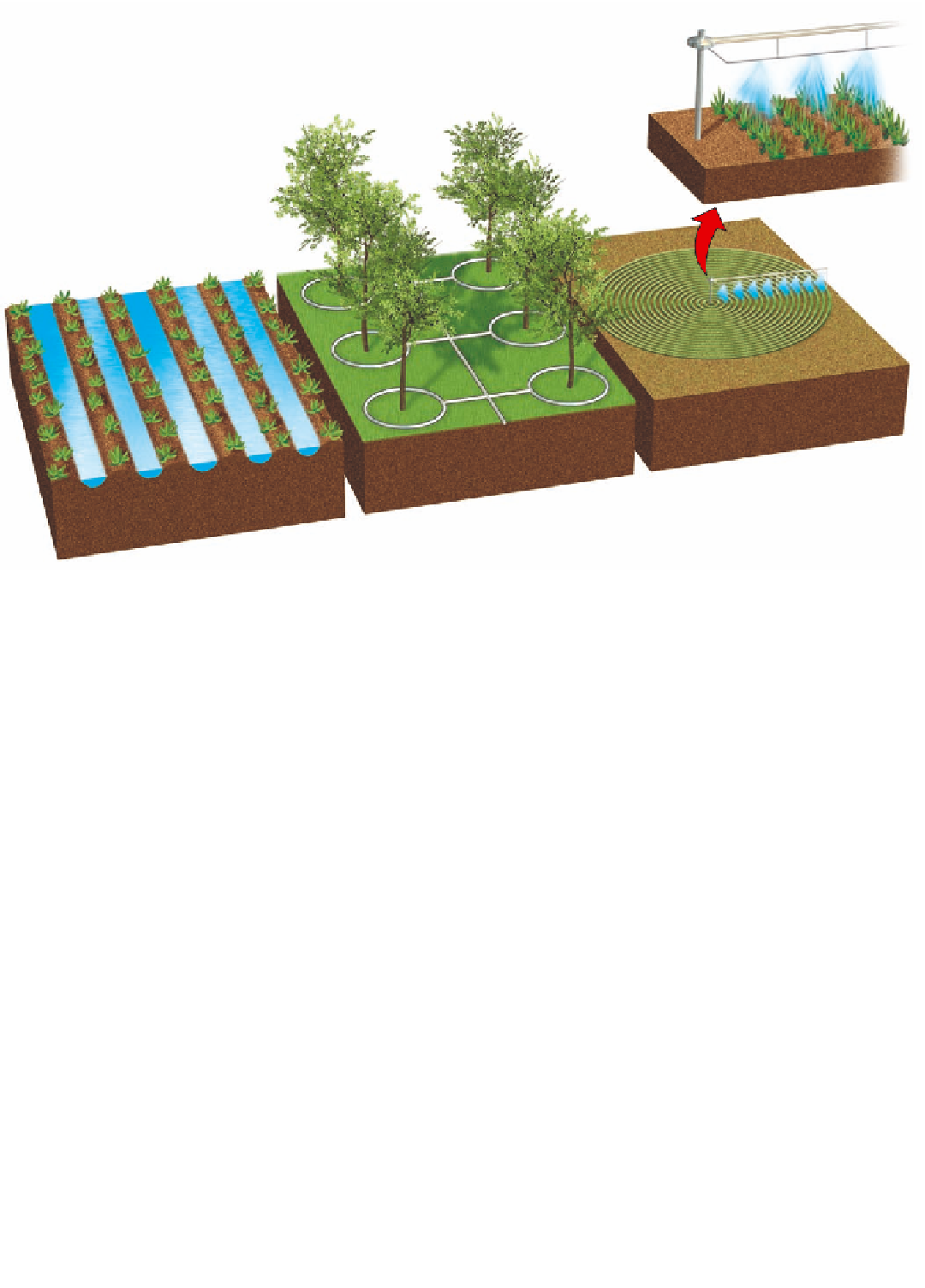Environmental Engineering Reference
In-Depth Information
Figure 11-17
Major
irrigation systems.
Because of high initial costs, center-
pivot irrigation and drip irrigation are
not widely used. The development of
new low-cost drip-irrigation systems
may change this situation.
Center pivot
(efficiency 80% with low-pressure
sprinkler and 90-95% with LEPA sprinkler)
Drip irrigation
(efficiency 90-95%)
Water usually pumped from
underground and sprayed from
mobile boom with sprinklers.
Gravity flow
Above- or below-ground pipes
or tubes deliver water to
individual plant roots.
(efficiency 60% and 80% with surge valves)
Water usually comes from an
aqueduct system or a nearby river.
spraying the water closer to the ground and in larger
droplets than the center-pivot, low-pressure system.
Another method is to use
soil moisture detectors
to wa-
ter crops only when they need it.
Drip irrigation
or
microirrigation
(Figure 11-17, cen-
ter) is the most efficient way to deliver small amounts
of water precisely to crops. It consists of a network of
perforated plastic tubing installed at or below the
ground level. Small holes or emitters in the tubing de-
liver drops of water at a slow and steady rate, close to
the plant roots.
Drip irrigation is very efficient, with 90-95% of the
water input reaching the crops. The flexible and light-
weight tubing system can easily be fitted to match the
patterns of crops in a field and left in place or moved
around.
Currently, drip irrigation is used on slightly more
than 1% of the world's irrigated crop fields and 4% of
those in the United States. This percentage rises to 90%
in Cyprus, 66% in Israel, and 13% in California. Unfor-
tunately, the capital cost of conventional drip irriga-
tion systems remains too high for most poor farmers
and for use on low-value row crops.
As noted earlier, irrigation water is underpriced.
Raise water prices enough and drip irrigation would
quickly be adopted to irrigate most of the world's
crops.
Good news.
The capital cost of a new type of drip
irrigation system is one-tenth as much per hectare as
that for conventional drip systems.
Figure 11-18 (p. 250) lists other ways to reduce wa-
ter waste in irrigating crops. Since 1950, water-short
Israel has used many of these techniques to slash irri-
gation water waste by 84% while irrigating 44% more
land. Israel now treats and reuses 30% of its municipal
sewage water for crop production and plans to in-
crease this percentage to 80% by 2025. The government
also gradually eliminated most water subsidies to
raise the price of irrigation water to one of the highest
in the world. Israelis also import most of their wheat
and meat and concentrate on growing fruits, vegeta-
bles, and flowers that need less water.
Many of the world's poor farmers cannot afford
most of the modern technological methods for in-
creasing irrigation and irrigation efficiency. Instead,
they
resort
to
small-scale
and
low-cost
traditional
technologies.
Some (in Bangladesh, for example) use pedal-
powered treadle pumps to move water through irriga-
tion ditches. Others use buckets or small tanks with
holes for drip irrigation.


